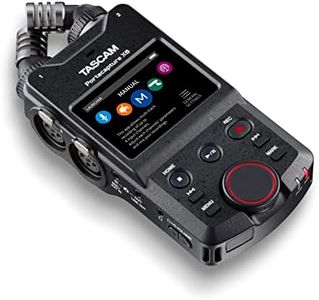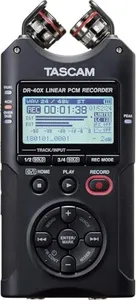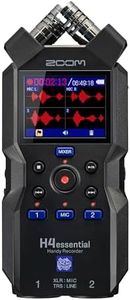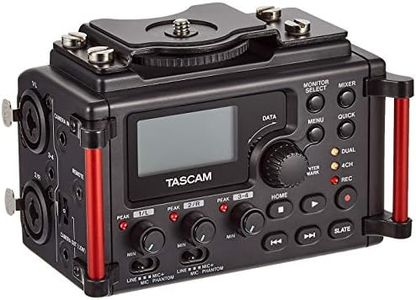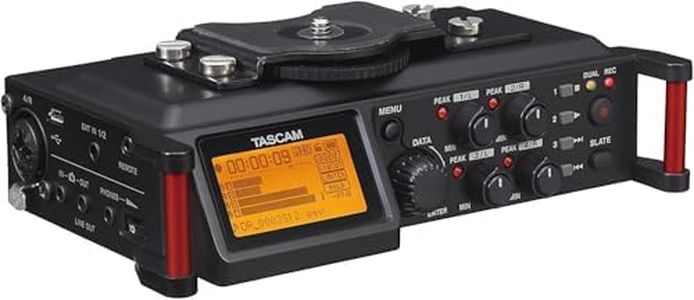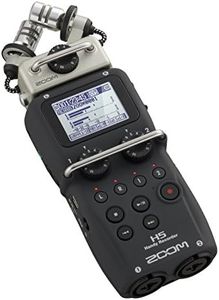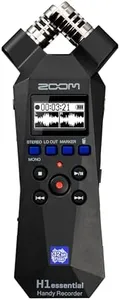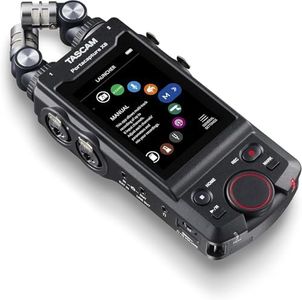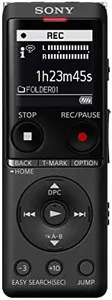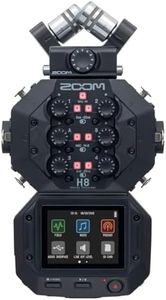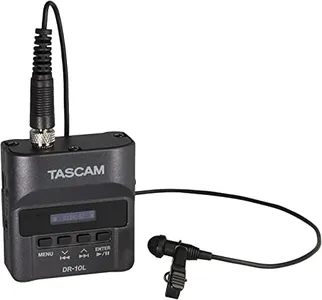We Use CookiesWe use cookies to enhance the security, performance,
functionality and for analytical and promotional activities. By continuing to browse this site you
are agreeing to our privacy policy
10 Best Voice Recorders
From leading brands and best sellers available on the web.By clicking on a link to a third party's website, log data is shared with that third party.
Buying Guide for the Best Voice Recorders
Choosing the right voice recorder is all about matching your needs with the features available. Consider how and where you'll use the voice recorder – for lectures, interviews, music, field recording, or personal notes. The key is to focus on quality, portability, ease of use, and storage, so you end up with a device that truly fits your daily habits and preferences. Understanding what each specification means will help you avoid overspending on features you won't use or selecting a model that doesn't fully suit your needs.Recording Quality (Bitrate and Format)Recording quality, typically measured by bitrate and the audio format (like MP3, WAV), determines how clear your recordings will sound. Higher bitrates and uncompressed formats produce better sound quality, essential for capturing music or important interviews, but they also take up more storage space. If you just need to record lectures or meetings, a lower quality setting will usually be enough and give you more recording time. Think about what you’re recording – clearer sound is important if the recording will be shared or used professionally, but for personal notes, simplicity may be better.
Microphone Type and SensitivityVoice recorders come with different types of microphones, such as built-in, stereo, directional, or omnidirectional. Microphone sensitivity relates to how well the device can pick up quiet or distant sounds. If you'll use the recorder in noisy environments or need to capture sound from a distance, look for a model with high sensitivity and possibly a directional mic. For straightforward voice memos or close-up conversations, basic built-in microphones usually do fine. Reflect on your recording environment to guide your choice here.
Storage Capacity (Internal & Expandable)Storage capacity tells you how much audio you can keep on the device before needing to transfer or delete old files. Some recorders offer built-in memory, while others allow for expandable storage using memory cards. If you need to record for many hours at once or can’t transfer files often, go for a model with ample storage or memory card support. If you mainly record short clips and can regularly move files to your computer, lower capacity is sufficient.
Battery Life and Power OptionsBattery life determines how long your recorder can operate before recharging or changing batteries. Some use replaceable batteries, while others are rechargeable via USB. If you'll be recording over extended periods away from power sources, longer battery life is a must. For quick or occasional use, shorter battery life may not be an issue. Think about how often you'll use the recorder and whether you’ll be able to recharge it easily.
Portability and SizeThe size and weight of a voice recorder affect how easy it is to carry and use on the go. Smaller, lighter models are easy to slip into a pocket and are convenient for quick notes, but sometimes come with fewer features or smaller controls. Larger models might be better for stationary use or if you need more buttons and settings for advanced recording. Assess if portability or more features matter more for how you plan to use the recorder.
Ease of Use (Controls and Display)The user interface, including buttons, menus, and display screens, helps you quickly start, pause, and manage recordings. Simple controls are key if you're not comfortable with technology or need to record quickly. Advanced users might prefer models with extra options and customizable settings. Think about your comfort with gadgets and how much control over settings you really need.
Connectivity (USB, Bluetooth, Audio Output)Connectivity options refer to how you transfer files or listen to recordings—USB ports, Bluetooth for wireless transfers, or headphone and line-out jacks for easy playback. If you need to move files to your computer or phone quickly, look for convenient transfer options like USB or wireless. For just listening back on the device itself, basic connectivity is often enough. Match this feature to your workflow for handling audio files.


